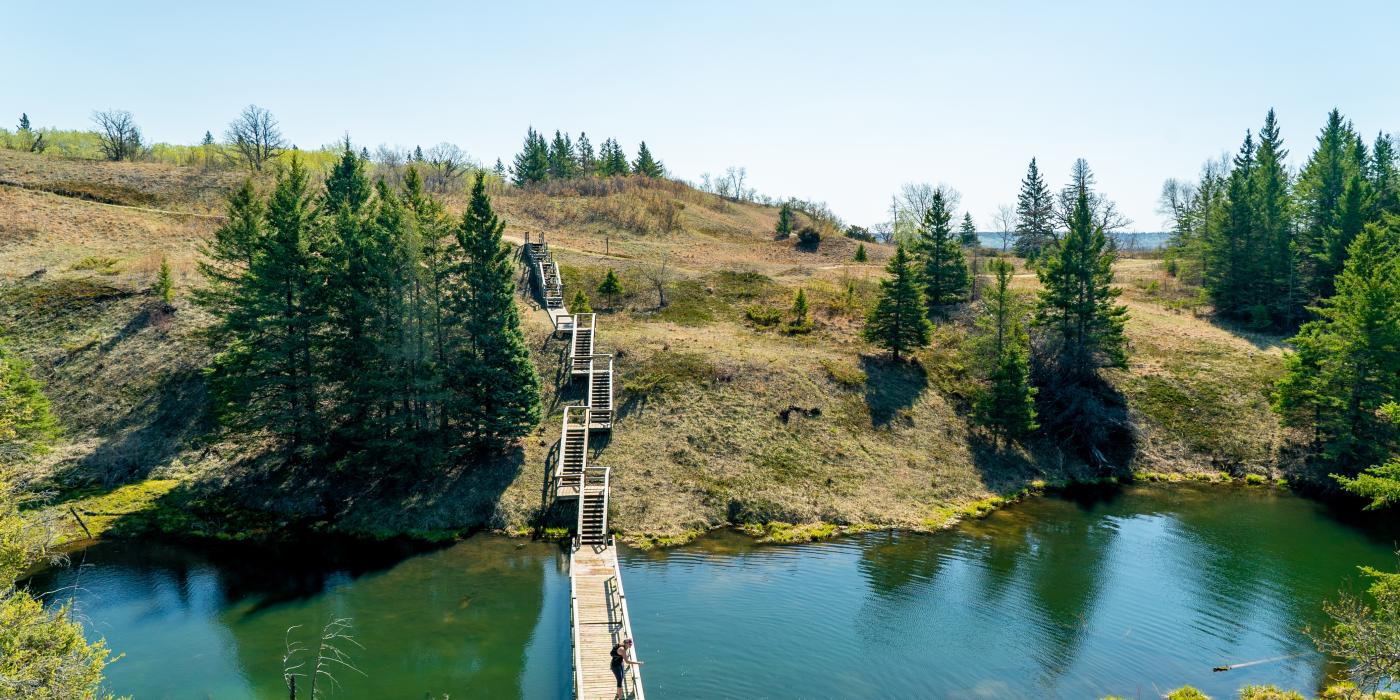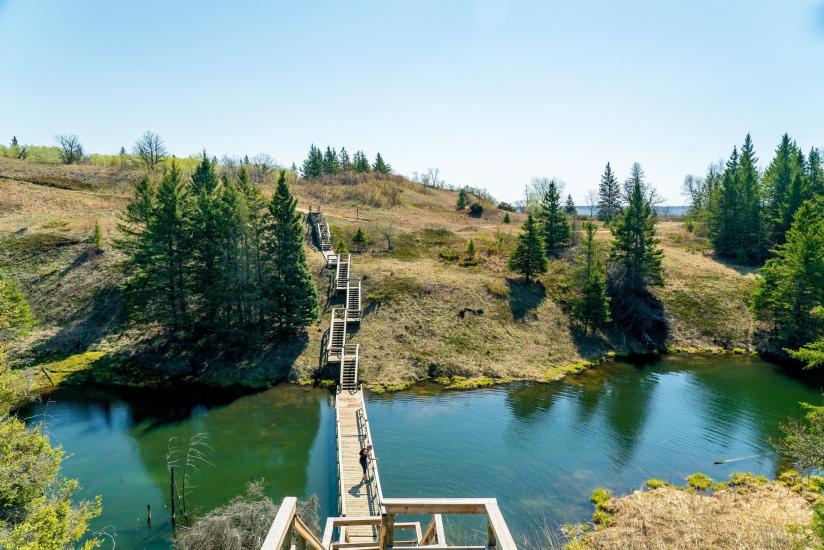- Things To Do
- Events
- Food & Drink
-
Places To Go
- Winnipeg
- Churchill
- Eastern Region
- Central Region
- Interlake Region
- Parkland Region
- Western Region
- Manitoba North
- Must-See Destinations
-
Itineraries
- Island Getaway on the Prairies
- Wheat City Wanderings in Brandon
- Escape to the water and the wild
- St. Boniface Winter: Passion and History
- Follow the path to a story in Neepawa
- Unleash your inner Viking this winter
- Explore Clear Lake this winter like never before
- Breathe in the Whiteshell this winter
- Go North for a boreal forest escape
- Treaty Areas
- Where To Stay
- Trip Essentials
- #ExploreMB Blog
Navigation Options
- FREN
- Things To Do
- Events
- Food & Drink
-
Places To Go
- Winnipeg
- Churchill
- Eastern Region
- Central Region
- Interlake Region
- Parkland Region
- Western Region
- Manitoba North
- Must-See Destinations
-
Itineraries
- Island Getaway on the Prairies
- Wheat City Wanderings in Brandon
- Escape to the water and the wild
- St. Boniface Winter: Passion and History
- Follow the path to a story in Neepawa
- Unleash your inner Viking this winter
- Explore Clear Lake this winter like never before
- Breathe in the Whiteshell this winter
- Go North for a boreal forest escape
- Treaty Areas
- Where To Stay
- Trip Essentials
- #ExploreMB Blog

If our Provincial Park Madness competition proved anything, it’s that for as many parks as we have, each has its unique features that draw visitors for very different reasons, and that Manitobans are passionate about their provincial parks. While we can’t list every park’s attractions – well we could, but you can imagine how long that list would be – we can focus on a few and tell you just what you can look forward to should you have the opportunity to visit or stay for awhile.
Hiking trails and a lighthouse
Hecla/Grindstone Provincial Park
There’s simply no other way to describe this island retreat beyond peaceful and picturesque. Named after Iceland’s Mt. Hekla, there’s a rich history here dating back to its days of Icelandic settlement during the 1800s. Immerse yourself in Hecla’s past as you walk the self-guided trail of restored buildings including its school, church, community hall, boarding house and fish station. Hold your breath as you hike to the Wildlife Viewing Tower Trail and let it go as you approach the prime spot for viewing moose in their natural habitat. Let the awe of nature capture you on the Grassy Narrows Marsh Trails. Place your feet on the boardwalks with marshes on either side for as far as the eyes can see. Discover the old limestone quarry of the West Quarry Trail with its towering aspen and white spruce. Journey along the Lighthouse Trail with its stunning views of the shoreline with Lake Winnipeg on one side and Gull Harbour on the other until you arrive at the island’s lighthouse and most iconic feature.
Shamanic shapes and sacred sites
Whiteshell Provincial Park
Whiteshell is one of Manitoba’s best loved and most visited provincial parks. And some 2,000 years ago, it was also a meeting place of first peoples, who, through the placement of rocks depicting animal and humans forms, created what is now known today as the petroforms of the Whiteshell. These stones weren’t laid in the name of art, but as an act of worship. And there is something undoubtedly spiritual and supernatural about the Whiteshell, or as Aboriginal legends sacredly revere it as the “place where God sits” in Anishinabe. It is considered a place of teaching, healing and a doorway to other worlds. While some of the original petroforms at Bannock Point near Nutimik Lake no longer exist, some Aboriginal descendents have followed in the footsteps of their ancestors, recreating formations. All the authentic formations from 2,000 years ago still exist, however, at Tie Creek, which is considered one of the oldest and most sacred sites.
Clear waters and self-guiding caves
Clearwater Lake Provincial Park
While the words damp, dark and mossy do not necessarily inspire one’s curiosity to explore, we encourage you to keep an open mind. A visit to Clearwater Lake will put it all into perfect perspective. Emerging as the winner of our Provincial Park Madness competition, this should inspire some confidence in our recommendation as one of the most captivating places in Manitoba, we dare say, on earth. The name Clearwater Lake is no mistake or play on words. It is so clean and so clear that you can see straight to the bottom of this lake some 30-odd ft. below. It is fed by a spring and its cool, calm waters will soothe any worries and stress away…at least for the time you’re there. And here’s where the dark, damp and mossy adventure begins. Whether you choose to do it first or last, the self-guiding trails, cave formations and dolomite cliffs are a must-explore in this provincial park. The landscape of Clearwater Lake combines the rich greenery of moss-covered rocks littered with ferns, shrubs and trees along the way, shaded crevices of cave openings, and light-coloured bedrocks of dolomite.
A beach and a boardwalk
Grand Beach Provincial Park
As the runner up in a very close race, Grand Beach certainly has a special place in the hearts of Manitobans and with good reason. It’s one of the top beach destinations during the summertime and its boardwalk gets some heavy traffic. Ask regulars what brings them to Grand Beach and often enough you’ll hear boasts of its beautiful white sands and bustling boardwalk. Originally built in the 1930s, the boardwalk recently received a facelift, and is a great place for an evening stroll. And if you don’t fancy crowds, you can escape to a corner of Grand Beach where large dunes and plant life will allow for the privacy and quiet that you so crave. This family friendly location stretches for miles and miles all the way to Lester Beach and is a worthy rival to any tropical destination.
Baldy and breathtaking
Duck Mountain Provincial Park
While Manitoba is known for its prairie landscape, at 831 metres above sea level, Baldy Mountain is Manitoba’s highest peak. Tucked away in the southwest corner of Duck Mountain Provincial Park, it is 440 kilometres northwest of Winnipeg and part of the Manitoba Escarpment. The terrain is as vast as it is beautiful with rolling green hills, thick woodland forests and deep blue lakes. The shale core of this region is covered by highlands and vast valleys and is home to moose, elk, white-tailed deer, coyotes, lynx, timber wolves, black bears, foxes and a diverse species of birds. But just because you’re on Baldy Mountain doesn’t mean you have to stay there. On a clear-sky day, should you dare to climb the viewing tower of this peak, you’ll be treated to a spectacular view of aspen and spruce forests that stretch as far as Riding Mountain National Park.
Cliffs, falls and wilderness
Nopiming Provincial Park
If you’re searching for a truly far-flung adventure, add Nopiming to your bucket list of must-visit provincial parks. And the name, which in Anishinabe means “entrance to the wilderness”, says it all. While this park was, until recently, only accessible by water, bush plane or winter roads, PR 314 will now transport you to this remote location of hills and ridges, ancient rock outcroppings, with lakes and rivers of Canadian Shield. The hike to the falls is a quiet and scenic one. The peaceful location is brought to life by the laughter of thrill seekers as they jump off any one of the three cliffs that range in height from just under 5 ft. to over 20 ft. This activity, however, is not for the faint of heart. And don’t be startled if you happen to glimpse any wildlife along the way, as this park is home to caribou, moose, black bears, timber wolves and cougars.
Oasis in the middle of a desert

Spruce Woods Provincial Park
Just two hours west of Winnipeg, and less than an hour from Brandon, Spruce Woods Provincial Park’s diverse landscape offers a unique mix of environments from grass prairies to forested areas and parkland. Among the experiences to be had in this park are its desert-like sand dunes, the Spirit Sands and eerie oasis, the Devil’s Punch Bowl. The sands, remnants of the Assiniboine River, are now home to Manitoba’s only lizard, the northern prairie skink. While the hike through the sands is challenging, the experience is worth every step with its beautiful self-guiding trails, steep wooden steps and differing landscapes. The blue-green water of Devil’s Punch Bowl is in stark contrast to the Spirit Sands. The small lake is fed by a groundwater spring with a view from above that is nothing short of stunning and surrounded by greenery.
Little islands and roaring falls
Paint Lake and Pisew Falls Provincial Park
Paint Lake is just over 30 km south of Thompson and is considered the centrepiece of Paint Lake Provincial Park. But the lake is hardly the only attraction in this park. From its hidden coves and numerous islands, to its peaceful bays, beaches and Precambrian forests, it’s the perfect place to plan your next getaway with lots to see and do. Beyond its allure as a picturesque destination, Paint Lake has a rich history as a trading post and canoe route, and is also the site of an historic fort. And while you’re in Thompson, it’s worth the while to make a stop at Pisew Falls Provincial Park. These majestic falls are further evidence to support the fact that Manitoba is more than just prairie land.
A chapel, a tower and a campsite
Camp Morton Provincial Park
While it may not be as popular as other provincial parks, it’s not for its lack of charm. Camp Morton’s historic buildings, sandy beaches, and boreal forests are a mere 8 km from Gimli. Those who know this park intimately can bear witness to its pristine gardens and impeccable surroundings, which also double as a campsite. If you’re planning a vacation that the entire family can enjoy, put Camp Morton to the top of your list. As you stroll through and appreciate some of this park’s historical fixtures like Camp Morton Chapel or the Water Tower and Engine Room, your kids will enjoy skipping through the Avenue of Urns, or spending a day at the beach.

